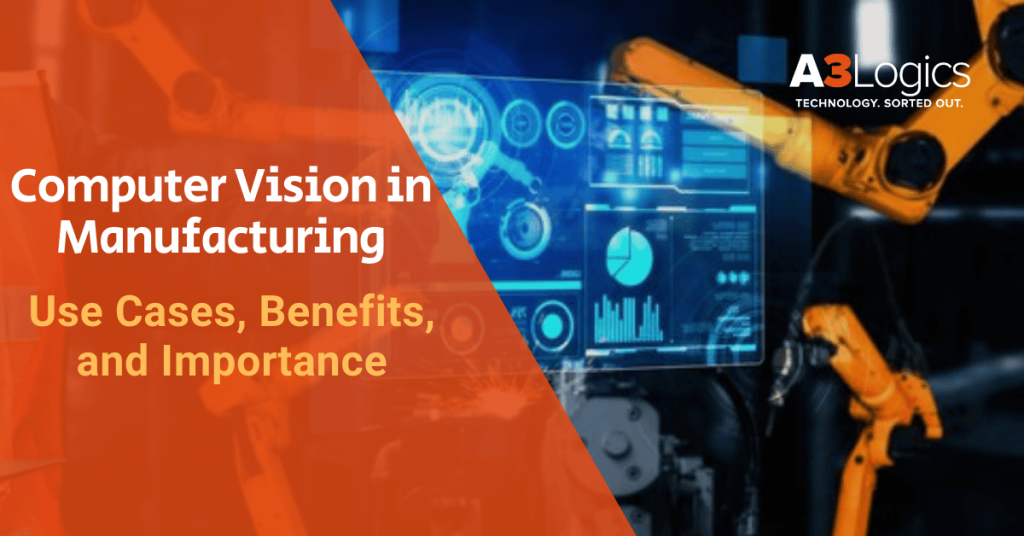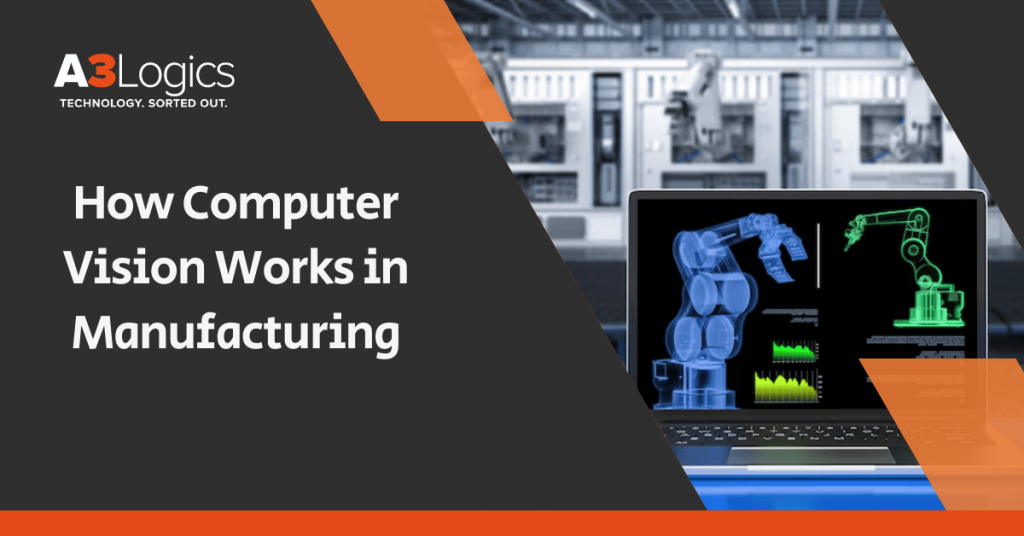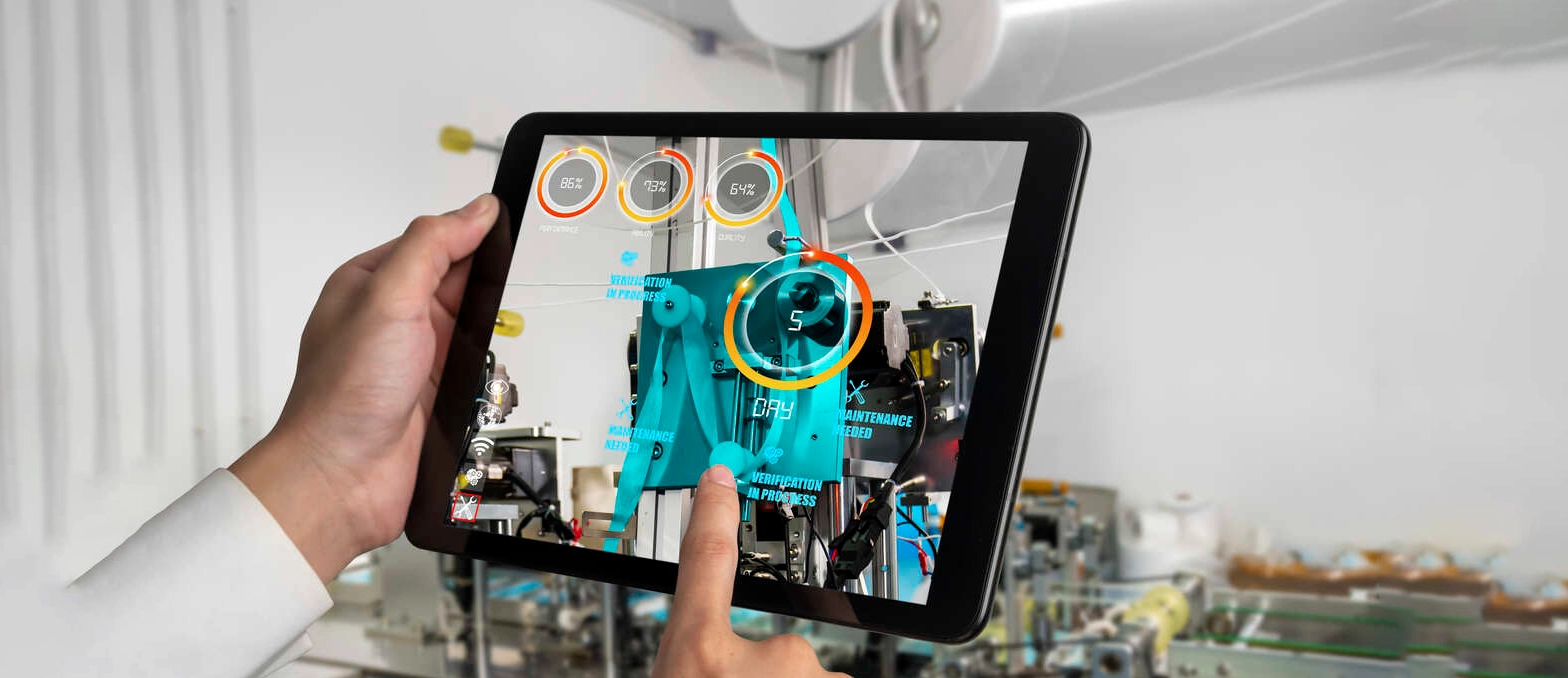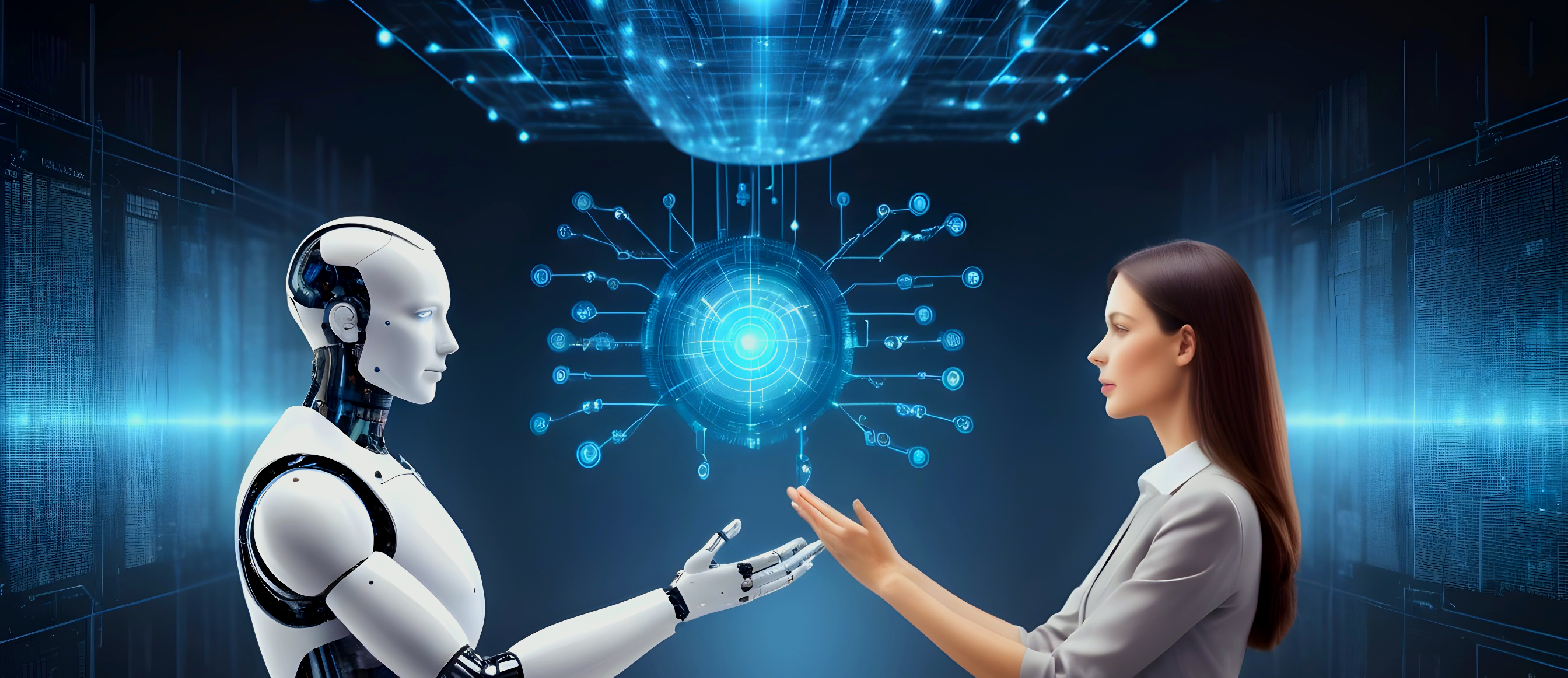Computer vision is that branch of artificial intelligence (AI) which allows machines to understand visual data, including images and videos. To put it simply, it helps computers understand what they are being made to see. The fact that this type of an ability to decode visuals just like humans do, makes Computer vision in manufacturing useful in more ways than we can imagine.

In manufacturing, computer vision technology helps machines carry out tasks that require visual understanding. It can catch a variety of defects, carry out quality checks, handle production lines, and even check if workers are following safety protocols. The systems are trained to look for specific visual clues and take actions based on what they see. This, in turn, makes the existing production processes faster and more efficient in several ways.
Table of Contents
Growing Role of AI and Automation in the Manufacturing Industry
The manufacturing sector is an industry that has always welcomed modern technology to overhaul efficiency. With extremely manual processes in the beginning, to mechanical equipment, and then finally the adoption of computerised frameworks. Now, the shift is toward smart automation driven by AI. Computer vision in manufacturing can analyse data, make predictions, and carry out actions without constant human involvement.
A key point to note here is the fact that what drives the shift in adoption and it’s always the need to make things better. Manufacturing processes must meet strict quality standards, and even a small mistake can lead to big losses. Automation cuts down the amount of human errors involved and brings in consistency. AI enhances this by learning from data, spotting patterns, and adapting to new situations.
Among the AI technologies making the biggest impact is computer vision. It gives machines the ability to see, and seeing is often essential in manufacturing. For instance, spotting a screw that’s been missing for ages, catching a packaging-related pattern that’s downright faulty, or keeping a track of items on a conveyor belt. These are visual tasks that computers can now perform quickly and accurately. Computer vision in manufacturing is playing a vital role in helping factories become more intelligent and responsive.
How Computer Vision Works in Manufacturing

Computer vision works in a wide range of patterns, and its very important to understand how it operates in a setup that’s all about manufacturing:
- Image Capture: Cameras or sensors collect images or video of a particular object, product, or process. With the technology that we now have in 2025, these images could range from being real-time videos to 3D feedback in some cases.
- Preprocessing: The captured images are processed to improve clarity. Adjustments like contrast, sharpness, or background removal make it easier for the system to focus on important features.
- Feature Extraction: Find what’s the most useful in the images that are presented – that’s how an algorithm works. These features could be edges, shapes, colors, or specific patterns that are relevant to the task. For instance, checking the alignment of components or counting the number of items.
- Analysis and Decision-Making: These images are then put in alignment with some models that are pre-defined in nature. If something doesn’t match, the system can flag the issue, stop the production line, or alert a supervisor.
- Action: Based on the analysis, the system can take action. The actions that we’re speaking of here may range from getting rid of a certain sub-standard product to toggling settings, or maintaining storage records.
- Computer vision in manufacturing also uses deep learning, a type of AI that allows machines to learn from large sets of images. The more details you want to get captured, the more data you need to feed the systems.
The human eye may sometimes happen to miss out on tiny details, but Computer vision is something that never misses its aim. If you’re thinking of setting your production lines in sync, there’s nothing better than Computer vision to make it happen.
Use Cases of Computer Vision in Manufacturing
There is no point in speaking about the benefits of a cutting-edge technology without mentioning its practical usage. When talking about the applications of computer vision in manufacturing, the list goes on and on. So without any further ado, let’s dive into some of the most common applications of computer vision in manufacturing:
1. Quality Control and Defect Detection
Ranking at top in the list of computer vision’s use cases in manufacturing is quality check. Quality check, when pulled off by human staff, can prove to be exhausting, time-consuming, and not exactly efficient. Computer vision systems in this case come handy, as they can scan products for defects and make sure the customers get to enjoy only the top-quality products.
Example: A laptop manufacturing plant can use computer vision cameras to ensure that every keyboard has its keys correctly placed on each unit during assembly. Moreover, they could also check the screen for any potential damage or scratches, and discard any product that doesn’t meet the quality standards.
2. Assembly Line Monitoring
Computer vision systems actively monitor the entire assembly process to ensure accuracy. They verify that all parts are present, correctly positioned, and that each step follows the proper sequence.
Example: In a washing machine factory, the system checks that wires are properly connected before the back panel is attached. Any errors stop the line to prevent faulty assembly.
Among the use cases of computer vision in manufacturing, real-time monitoring helps improve efficiency and maintain consistent product quality.
3. Worker Safety and Compliance
Safety is critical in manufacturing environments. Vision systems can check whether workers are wearing the required gear such as helmets and gloves. They can also detect dangerous behavior like entering restricted areas.
Example: In a metalworking shop, computer vision monitors whether employees wear eye protection near welding stations. Alerts are sent if someone is non-compliant.
The growing use cases of computer vision in manufacturing for safety checks help reduce workplace accidents and ensures compliance with safety standards.
4. Inventory and Warehouse Management
Keeping track of inventory manually can be slow and inaccurate. Vision systems can count products, track movement, and update stock levels. This leads to better inventory control and fewer shortages or overstock situations.
Example: In a parts warehouse, a vision system tracks boxes as they move on conveyors and updates stock levels in real time.
One of the lesser-discussed but impactful applications of computer vision in manufacturing is in managing stock and optimizing warehouse space.
5. Predictive Maintenance
Machines often give visual hints before they fail. These could be small leaks, changes in color, or unusual movement. Computer vision systems detect these early and help schedule maintenance before major problems occur.
Example: In a bottling plant, a camera identifies a slight vibration in a labeling machine. A technician checks it and finds a loose screw that could have caused downtime.
This is one of the valuable use cases of computer vision in manufacturing because it helps extend equipment life and prevent breakdowns.
6. Product Sorting and Classification
Sorting products by size, shape, or color is another area where computer vision shines. It’s especially useful in food processing, logistics, and packaging.
Example: A candy manufacturer uses cameras to sort sweets by color before packaging.
As one of the practical use cases of computer vision in manufacturing, automated sorting reduces errors and increases speed.
Benefits and Challenges of Implementing Computer Vision in Manufacturing
Benefits
Adopting computer vision is not just about automation—it’s about enhancing visibility, control, and accuracy across production. Its impact is seen in speed, consistency, safety, and long-term value.
- Consistent Quality: Computer vision performs inspections with the same accuracy every time, eliminating fatigue-related errors and ensuring all products meet the same quality standards.
- Fast Processing: Computer Vision in Manufacturing can inspect thousands of items per hour, far beyond human capability, allowing manufacturers to scale operations without compromising quality control.
- Cost Savings: Detecting defects early reduces material waste, product recalls, and rework costs—leading to leaner operations and more efficient resource use across production lines.
- Better Safety: Real-time video analysis checks if workers wear safety gear and follow protocols, preventing risky behavior and reducing workplace injury rates.
- More Data: Computer vision collects detailed image-based data, helping teams analyze trends, trace defects, and make better decisions based on actual visual evidence.
Challenges of Computer Vision in Manufacturing
While the benefits are clear, adopting Computer Vision in Manufacturing also brings technical, financial, and operational hurdles that businesses must carefully plan for to ensure a smooth and effective rollout.
- High Initial Costs: Purchasing cameras, processing units, software licenses, and training staff involves significant upfront investment, especially for high-resolution or AI-driven inspection systems.
- Integration Issues: Older machinery often lacks modern interfaces, requiring custom connections or upgrades to integrate vision systems with production and automation controls.
- Training and Skills: Staff must understand camera calibration, software tuning, and system troubleshooting, requiring hiring or training talent with both manufacturing and AI expertise.
- Data Overload: High-speed image capture generates large data volumes, demanding reliable storage, backup systems, and efficient data handling protocols for long-term use.
- Possible Errors: Poor training or inadequate datasets may cause Computer Vision in Manufacturing to miss defects or flag acceptable items, affecting output accuracy and operator trust.
Future of Computer Vision in Manufacturing
The future of computer vision in manufacturing holds immense promise, driven by both technological advancements and evolving industry demands. As costs drop and capabilities increase, even small and mid-sized factories are adopting these systems. Key trends shaping the future include:
- Edge Processing: More decisions are being made directly on devices like smart cameras, minimizing latency and enabling real-time responses without relying on central servers.
- Smarter AI Models: Modern algorithms require less data to train and can adapt to new conditions quickly. This means computer vision in manufacturing can be deployed faster and become more accurate over time.
- Cloud-Based Integration: Manufacturers are increasingly turning to the cloud for data storage, model training, and remote monitoring—making collaboration and scalability easier across multiple facilities.
- Robots with Vision: Vision-enabled robots are working alongside human operators, enhancing flexibility, precision, and safety on the factory floor.
- Focus on Sustainability: By identifying defects early and optimizing processes, computer vision reduces material waste and energy use, helping companies meet environmental and regulatory goals.
These advancements are turning computer vision in manufacturing from a competitive advantage into a core component of smart manufacturing systems across industries.
Conclusion: Computer Vision in Manufacturing
Computer vision is significantly transforming the manufacturing landscape by enabling smarter, faster, and more accurate operations. From real-time quality control to ensuring worker safety, the technology offers a wide range of benefits that contribute to higher productivity and lower operational costs. While the initial investment and technical challenges may seem daunting, the long-term gains—such as reduced defects, improved efficiency, and better compliance—make Machine learning services a strategic and worthwhile choice for forward-thinking manufacturers.
As technology continues to evolve and become more affordable, adoption is rapidly spreading across industries of all sizes. Businesses that embrace computer vision in manufacturing early position themselves for long-term success by staying ahead of the competition, minimizing errors, and maintaining consistently high standards. Far from being a passing trend, computer vision is fast becoming an essential element of modern manufacturing—driving demand for expert Computer vision development services to build reliable and scalable solutions.







